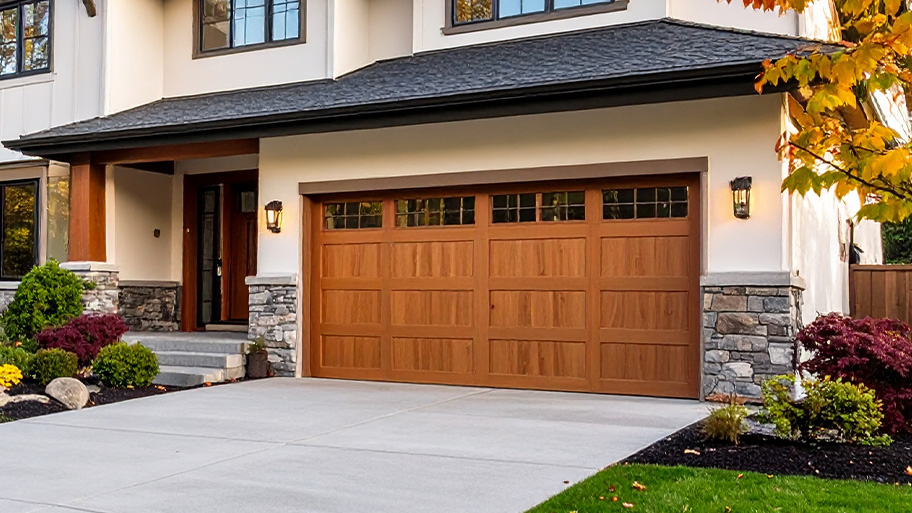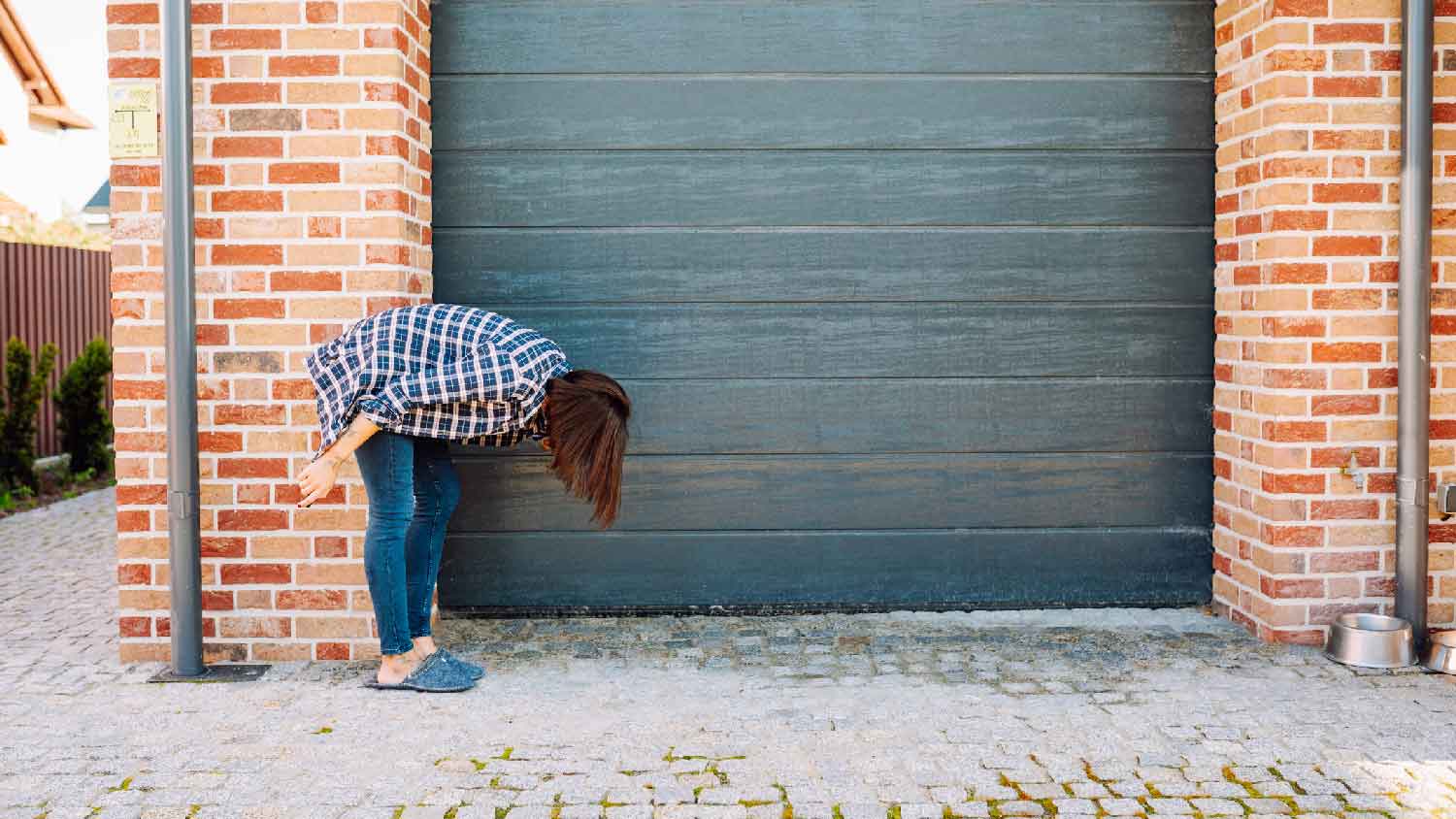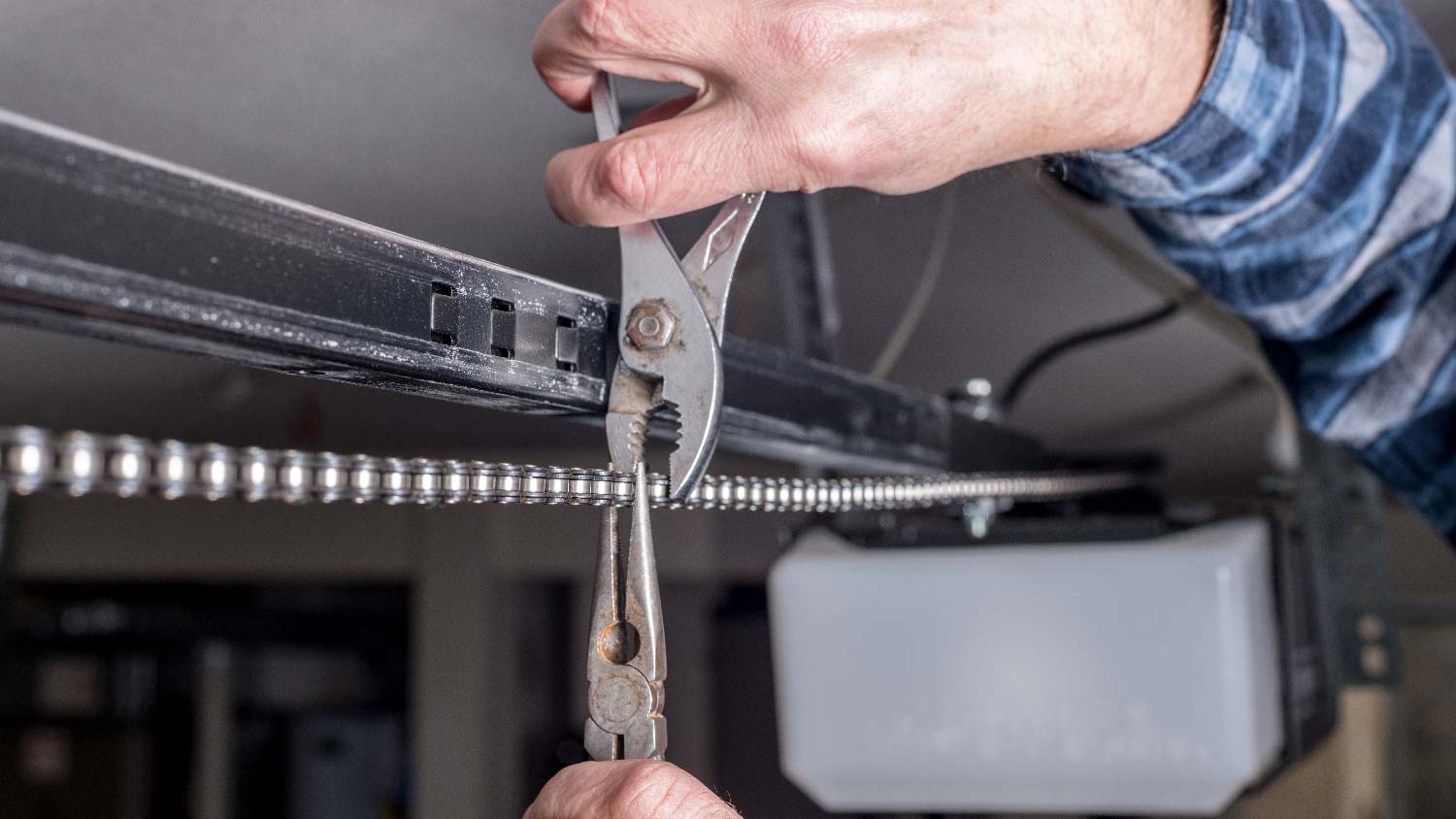
Replacing a garage door is necessary to add security and value to your home. Learn how each door type affects the total cost of this project in Columbus, OH.
The motor's running, but nobody’s home


Check the door opener, safety sensors, springs, and tracks.
You can DIY most issues, but you should call a pro for spring problems.
Most garage door repairs cost an average of $260.
Automatic garage door openers come in quite handy, especially if it’s raining, snowing, or you simply enjoy saying “open sesame.” But garage openers aren't perfect and may wear out or break down over time. Several factors could be to blame if your garage door is not opening but the motor is running. Here's what could be happening—and what to do about it.
When the garage door opener motor runs, but the door doesn't budge, the opener itself may have an issue. Your door opener can wear out in a few ways:
The gear drive may break down
The trolley carriage may break
The circuit board may stop functioning
There may not be enough tension in the chain
If you suspect the door opener is the problem, your best bet is to call a local garage door repair company. A repair pro can inspect the motor and accurately diagnose the issue, then let you know your options, such as repairing or replacing the opener.
Most garage doors have an emergency cord you can pull when you lose power. The cord is located above you, where the track leads to the motor. Once you pull this cord, you can open your door manually. For safety reasons, it's important you only pull this cord when the garage door is closed.

Modern garage doors feature photo eyes, or safety sensors, located near the floor on either side of the door opening. The safety sensors play an important role—they keep the door from closing if an object or person is standing underneath it.
But, sometimes, those sensors move out of place and stop functioning properly. The garage door opener believes something is blocking the door, so it doesn't budge.
Readjusting the sensors is something you can do yourself, though you may need a level to do so. In some cases, a smudge of dirt or dust on the front of the sensors may block them, so all you need to do is wipe it clean with a fresh hand towel.
Direct sunlight can also interfere with the safety sensors, causing them to do their job a little too well. If the sun shines specifically on the sensors, consider repositioning the sensors so they are in the shade. You may also install sunscreens around the sensors to help them continue operating even on the sunniest days.
The average garage door spring lasts for about 10,000 cycles, or a little over a decade, if you open your garage door twice a day, every day. Eventually, the spring will wear out or break, and the door won't be able to open. That won't stop the motor from trying, though.
If the spring is worn out or broken, it needs replacement. This isn't a DIY job, though, for a few reasons. Your garage door is heavy and you could hurt yourself if you try to move or remove it on your own. You also want to ensure the new springs are correctly installed to reduce the risk of future injury or damage to the garage door. Always call a garage pro for this task.
Your garage door slides along rails or tracks as it opens and closes. Like other parts, those tracks are subject to wear and tear and may become misaligned or otherwise damaged.
If you notice a track is out of alignment, you can try repositioning it yourself. With the garage door closed and the opener unplugged from its power source, loosen the screws that attach the rail to the wall or frame. Use a rubber mallet to tap the track back into place, then tighten the screws to hold it there.
In some cases, damage to the rollers along the track can interfere with the garage door opening. Inspect the rollers to look for rust or debris buildup. You may need to replace rollers that are extensively damaged or rusty. Spraying the rollers with a lubricant like white lithium grease can extend their lives.

The cables on your garage door support the spring, helping the door to open and close safely. Most doors have two cables, and if one snaps, it puts extra pressure on the other, not to mention additional strain on the spring. Sometimes, the door won't open if one cable has broken or is otherwise out of commission.
If you suspect a cable is broken and your garage door isn't opening, your best option is to call a garage door repair company to take a look. You don't want to risk injury or damage caused by a heavy, falling garage door.
From average costs to expert advice, get all the answers you need to get your job done.

Replacing a garage door is necessary to add security and value to your home. Learn how each door type affects the total cost of this project in Columbus, OH.

Need extra clearance for getting your vehicles into your garage? Find out how much it costs to convert two garage doors to one double door in this cost guide.

Your home's garage door cable repair cost depends on several factors, including the cost of other damage that may be the result or the cause of the failure.

Learn how to open your garage door manually during an outage safely without damaging the garage door. Never get stuck again.

Does your garage door go up but not down? You might have sensor issues, a broken spring or cable, a malfunctioning opener, or issues with the tracks.

Is your garage door frozen shut and preventing access? Use this simple how-to guide to fix the problem and take back your covered parking space.